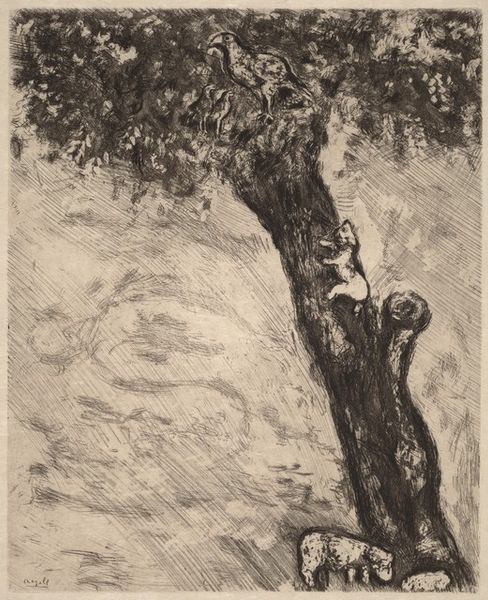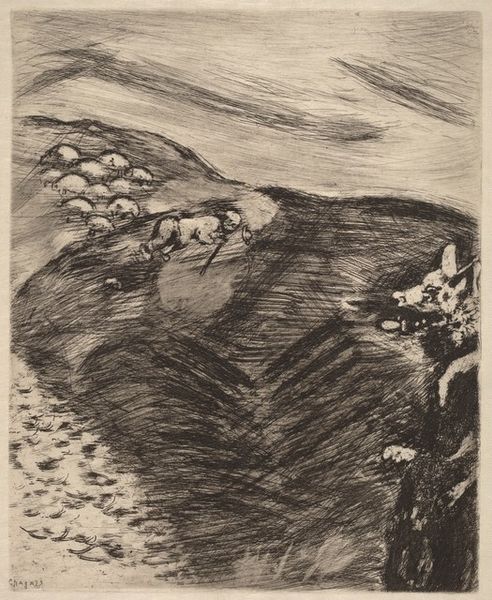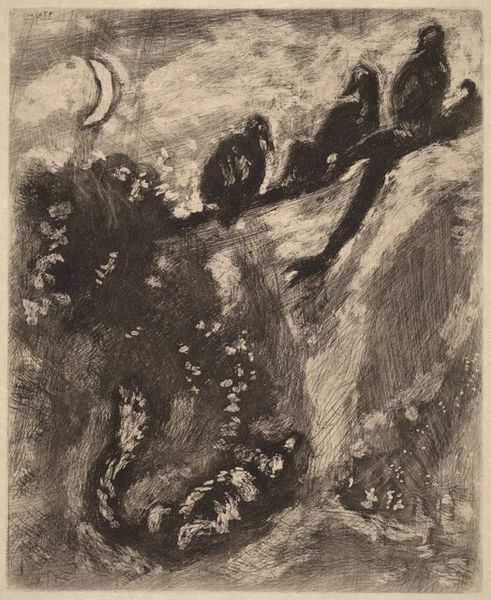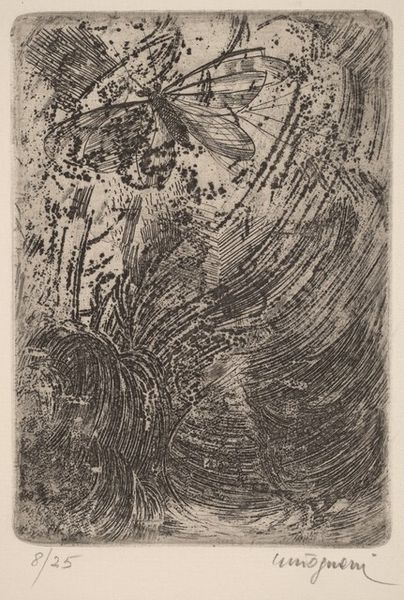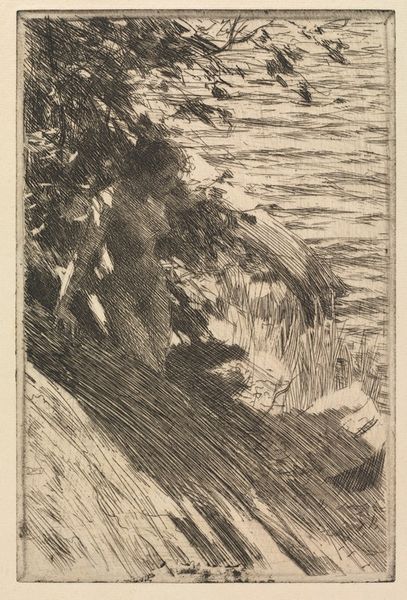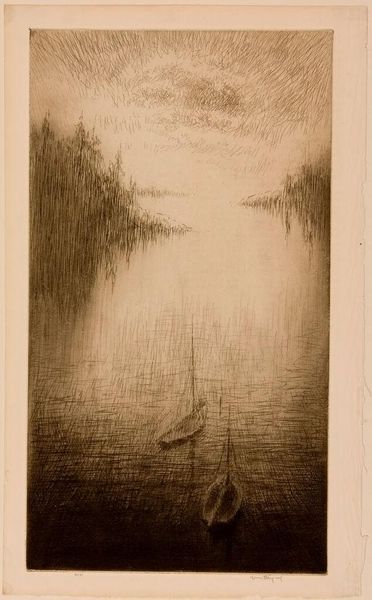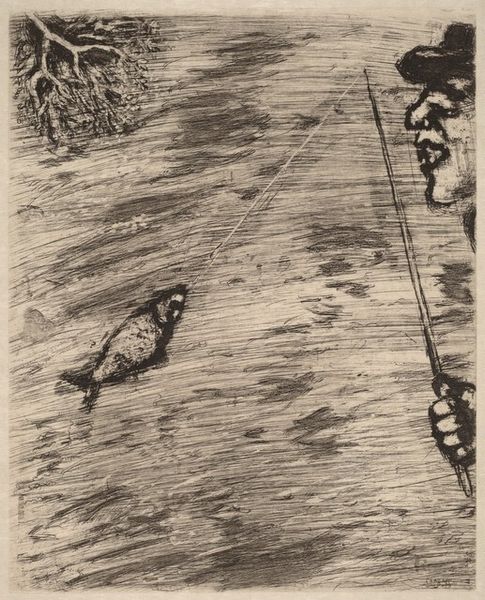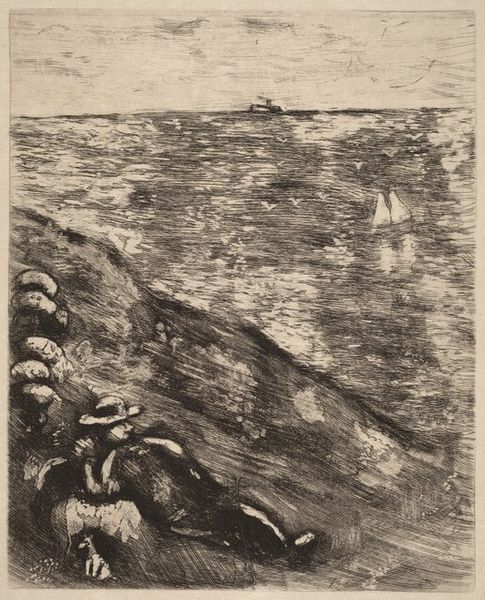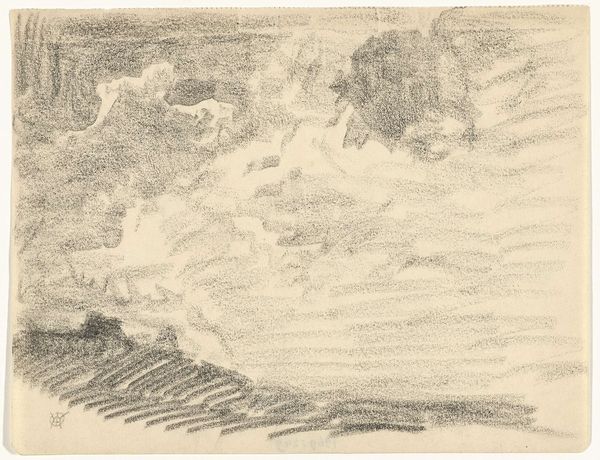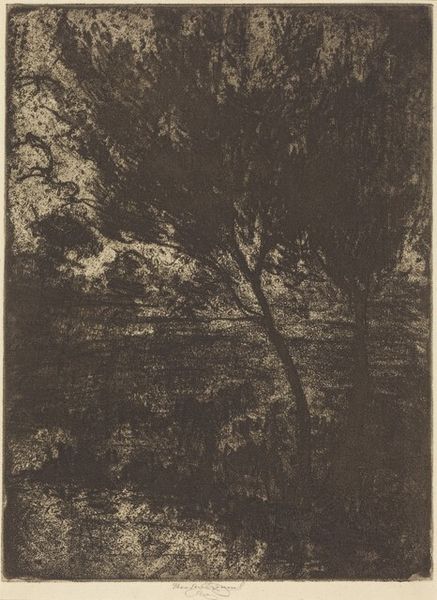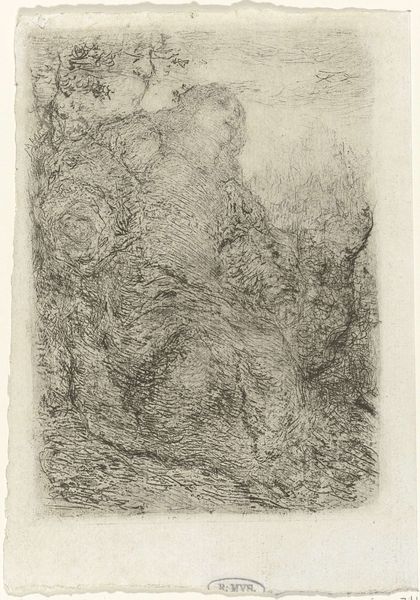
Copyright: National Gallery of Art: CC0 1.0
Curator: We’re looking at "The Drowned Woman," an etching made by Marc Chagall between 1927 and 1930. Editor: The texture immediately grabs me. It feels like the cross-hatching and delicate lines almost dissolve the image, lending an ethereal and tragic weight to the scene. Curator: Indeed, the formal choices contribute significantly. Chagall uses very fine lines, achieving tonal variations that build the impression of rippling water. See how the figure is placed at the bottom of the picture plane, anchoring our perspective in relation to the floating elements. Editor: It's powerful how the image stages a stark narrative. One can’t help but consider how the depiction of a drowned woman might resonate across social and historical contexts, opening avenues for discussion around gendered violence and vulnerability in early 20th-century society. Curator: Undoubtedly, interpretations may vary. Looking purely at its compositional construction, consider how Chagall employs abstraction. The reflected bench for example hovers above the woman's figure, establishing a deliberate distortion. These subtle artistic decisions guide our perception. Editor: Agreed, the semiotic language feels surreal. The water, the bench, and even the subject invite the viewer to ponder possible causes. Perhaps even the romantic roots of the piece reflect an underlying cultural fascination at that moment in time. Curator: These varying interpretations certainly invite more meaningful consideration, I feel. I’ve really noticed the skill in mark-making here today. Editor: It makes the work a very important intersection for discussing many points of discourse about romanticism and its relation to art’s narrative.
Comments
No comments
Be the first to comment and join the conversation on the ultimate creative platform.
